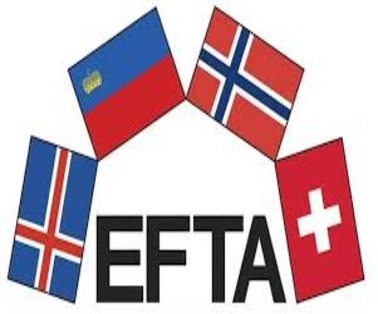The Central Board of Direct Taxes (CBDT) has signed a record 125 Advance Pricing Agreements (APAs) with Indian taxpayers in the financial year 2023-24, marking a significant milestone in India’s efforts to streamline transfer pricing and promote ease of doing business.
Key Highlights
- This marks the highest ever APA signings in any financial year since the launch of the APA programme.
- 125 agreements includes 86 Unilateral APAs (UAPAs) and 39 Bilateral APAs (BAPAs).
- The number of APAs signed in FY 2023-24 also represents a 31% increase compared to the 95 APAs signed during the preceding financial year.
- With this, the total number of APAs since inception of the APA programme has gone up to 641, comprising 506 UAPAs and 135 BAPAs.
- During FY 2023-24 CBDT also signed the maximum number of BAPAs in any financial year till date.
- The APA programme has contributed significantly to the Government of India’s mission of promoting ease of doing business, especially for Multi National Enterprises which have a large number of cross-border transactions within their group entities.
What Are Advance Pricing Agreements (APAs)?
- The Advance Pricing Agreement (APA) programme in India was launched in 2012 vide the Finance Act, 2012 through the insertion of Sections 92CC and 92CD in the Income-tax Act, 1961.
- An APA is a formal arrangement between a taxpayer and a tax authority on transfer prices.
- Transfer pricing refers to the setting of prices for goods, services, or intangible assets transferred between related entities within a multinational enterprise group.
- It ensures that transactions between these entities are priced fairly, reflecting market conditions and preventing tax evasion or profit shifting.
- For example, let’s say Company A in India sells products to its subsidiary Company B in the US. Company A can enter into an APA with the Indian tax authority and the US tax authority to agree on the transfer pricing methodology that will be used to determine the pricing of these products (being sold to its own subsidiary).
- The main objective of an APA is to keep a check on big multinational companies so that they do not engage in tax evasion by adjusting their profits
- APAs also allow businesses to reduce the risk of their transaction prices being challenged by tax authorities.
Types of Advance Pricing Agreements
- Unilateral
- APA entered into between a taxpayer and the tax administration of the country where it is subject to taxation
- Bilateral
- APA entered into between the taxpayers, the tax administration of the host country and the foreign tax administration
- Multilateral
- APA entered into between the taxpayers, the tax administration of the host country and more than one foreign tax administrations
Features of the APA Programme
- The APA process is voluntary and will supplement appeal and other Double Taxation Avoidance Agreement (DTAA) mechanisms for resolving transfer pricing disputes.
- The term of APA can be a maximum of 09 years (Including five years prospective and 04 years retrospective if the taxpayer has opted for roll rollback mechanism).
- The procedure ensures the protection of sensitive data provided by businesses.
- Statistical data and summary information are published, but without disclosing names of entities with concluded arrangements or applicants
Benefits of Advance Pricing Agreements
- For taxpayers, they carry the benefits of freedom from onerous documentation and tax authority audits, mitigating double tax in some cases and certainty for the business.
- The government stands to gain through reduced disputes, redirection of scarce administration resources and collecting their fair share of tax
- APAs boosts country’s attractiveness to investors by providing a definite and predictable policy regime.
- It reduces risk of potential double taxation through bilateral or multilateral APAs.
- It alleviates burden of record keeping by knowing required documentation in advance.
- APAs allow businesses to reduce the risk of their transaction prices being set incorrectly or challenged by tax authorities.
Double Taxation Avoidance Agreement (DTAA)
- A DTAA is a tax treaty signed between two or more countries. Its key objective is that tax-payers in these countries can avoid being taxed twice for the same income.
- A DTAA applies in cases where a taxpayer resides in one country and earns income in another.
- DTAAs can either be comprehensive to cover all sources of income or be limited to certain areas such as taxing income from shipping, air transport, inheritance, etc.
CBDT
- It is a statutory authority that functions under the Central Board of Revenue Act, 1963.
- It is a part of the Department of Revenue in the Ministry of Finance.
- It provides inputs for policy and planning of direct taxes in India and is also responsible for the administration of direct tax laws through the Income Tax Department.
Structure Of CBDT
- The CBDT is headed by Chairmanand also comprises of six members, all of whom are ex-officio Special Secretary to the Government of India.
- The Chairman is the co-ordinating head,and each of the members has been assigned a specialized function.
- The Chairman and Members of CBDT are selected from Indian Revenue Service (IRS).
- Members: Member (Income Tax), Member (Legislation and Computerization), Member (Revenue), Member (Personnel & Vigilance), Member (Investigation), Member (Audit & Judicial)
Conclusion
The record-breaking number of Advance Pricing Agreements signed in FY 2023-24 highlights India’s commitment to improving tax compliance and supporting multinational businesses. The APA programme continues to be a cornerstone of India’s strategy to promote fair taxation, reduce disputes, and enhance investor confidence
To Download Monthly Current Affairs PDF Click here
Click here to get a free demo
Discover all about CLAT Exam



